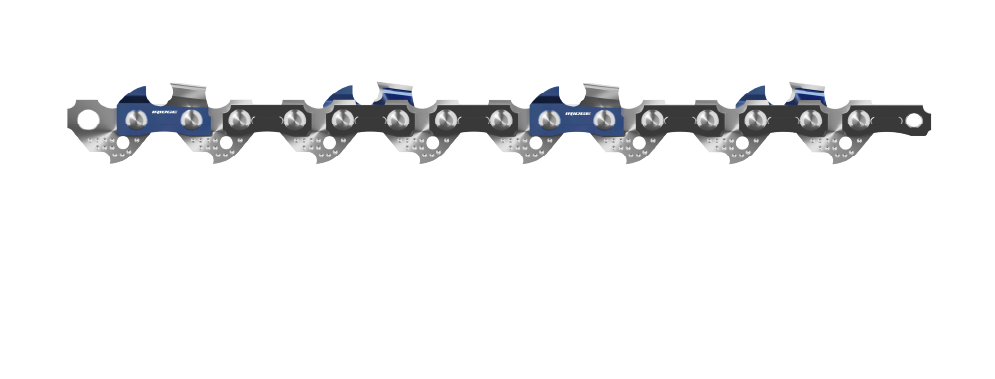Understanding the Basics of a Chainsaw Chain
A chainsaw chain is the most vital cutting component of a chainsaw. It loops around the guide bar and contains a series of sharp cutting teeth designed to slice through wood efficiently. However, not all chainsaw chains are created equal. Variations in their design, materials, and configuration significantly affect cutting performance, smoothness, and durability. Understanding the distinctions between different chainsaw chains helps users choose the most suitable one for their tasks, whether it’s felling trees, pruning, or cutting lumber.
Types of Chainsaw Chains by Cutter Design
One of the most important differences lies in the shape of the cutting teeth. The cutter design determines how aggressive the chain cuts, the smoothness of the finish, and how easily it can be sharpened. The three main types of cutter designs are full chisel, semi-chisel, and low-profile chains.
Full Chisel Chains
Full chisel chains feature square-cornered teeth that cut wood fibers aggressively. They deliver faster cutting speeds and are ideal for professionals handling hardwood or large logs. However, they dull faster, especially in dirty or frozen wood, and require more frequent sharpening.
Semi-Chisel Chains
Semi-chisel chains have rounded corners on their cutting teeth. This design reduces the aggressiveness slightly but offers greater durability and resistance to dulling. Semi-chisel chains are preferred for general use, especially in environments with mixed or dirty wood conditions.
Low-Profile Chains
Low-profile chains have smaller teeth and are commonly used on consumer-grade chainsaws. They are safer and easier to handle, offering reduced kickback. These chains are suitable for light-duty tasks such as trimming, pruning, and small tree cutting.
Understanding Chain Pitch and Gauge
Besides the cutter type, chain pitch and gauge are critical measurements that differentiate chainsaw chains. These determine the size, strength, and compatibility of the chain with a particular chainsaw model.
| Specification | Description |
| Pitch | The distance between every three rivets divided by two. Common pitches include 0.325", 3/8", and 0.404". Larger pitches are used for heavy-duty cutting, while smaller ones suit compact saws. |
| Gauge | The thickness of the drive link, which must match the groove in the guide bar. Typical gauges are 0.043", 0.050", 0.058", and 0.063". |
| Drive Links | The number of links that fit into the guide bar. The correct count ensures proper fit and smooth operation. |
Choosing a chain with the correct pitch, gauge, and number of drive links is essential for both safety and performance. A mismatch can cause excessive wear, vibration, and even equipment damage.
Material and Coating Differences
Chainsaw chains are primarily made from steel, but differences in heat treatment and coating can dramatically influence performance and longevity. High-quality chains may have additional chrome plating or carbide-tipped teeth for added durability.
- Standard steel chains offer a good balance between cost and performance.
- Chrome-coated chains resist wear and corrosion, making them ideal for prolonged outdoor use.
- Carbide-tipped chains provide extreme durability for cutting through dirty, frozen, or abrasive wood but require special sharpening tools.
Performance and Application Comparison
Different chains serve different cutting conditions. Selecting the right one ensures maximum efficiency, safety, and lifespan of both the chain and the chainsaw. Below is a comparison of how various types perform under typical conditions.
| Chain Type | Cutting Speed | Durability | Recommended Use |
| Full Chisel | Fast | Medium | Hardwood, professional logging |
| Semi-Chisel | Moderate | High | General cutting, mixed wood conditions |
| Low-Profile | Moderate | Medium | Home use, pruning, and light trimming |
Safety and Maintenance Considerations
Regardless of the type, proper maintenance of the chainsaw chain is crucial. A dull or poorly tensioned chain not only reduces cutting efficiency but also increases the risk of kickback or chain breakage. To ensure safe operation, users should:
- Check the chain tension before each use and adjust it to manufacturer specifications.
- Sharpen the chain regularly using the correct file size or professional sharpening tools.
- Lubricate the chain adequately to reduce friction and overheating.
- Replace the chain when teeth are chipped, broken, or excessively worn.
Conclusion
In summary, while all chainsaw chains may appear similar, their performance characteristics vary significantly depending on cutter design, pitch, gauge, and material. Full chisel chains are ideal for professional speed cutting, while semi-chisel and low-profile chains cater to durability and safety. Selecting the right chain not only ensures smoother and faster cuts but also enhances overall safety and tool longevity. Understanding these distinctions enables both professionals and hobbyists to make informed decisions and get the most out of their chainsaws.





